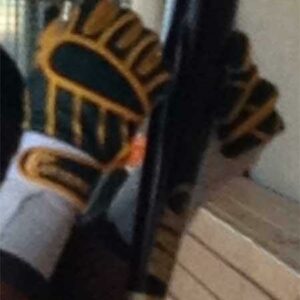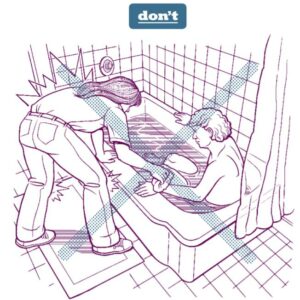Here’s a short and hopefully simple tutorial on how to make handpaws with a sewing machine! This technique is also known as “pancake paws” since they are patterned and sewn flat with a sew-then-cut technique. This technique is done using a sewing machine, and you really only need ½ a yard of fur material for this project, depending on how long you want the wrist cuffs or sleeves to extend up your arm. You will also need any sort of fabric to use for your paw pads. Fleece, vinyl, or any regular non-fraying fabric works well.
Materials
- Cardstock or paper for the pattern
- Scissors
- Chalk for marking your fabric
- Sewing machine & matching thread
- about ½ yard fake fur in the color of your choice
- Paw pad fabric
Recommended
- Wire slicker brush
- Sculpy clay for claws
- Washable adhesive (like E6000) if adding claws.
First, spread out your hand as much as you can, and trace around it with at least ½ – 1 inch bordering around your fingers (this will allow room for your fingers and include your seam allowance). Double check the thickness of your paw’s digits by laying two fingers together in each finger pattern opening, if the digits are at least that wide then that way it should not be too small. You can also check at the end of this tutorial for a pattern to print.
Next, cut out your new pattern in cardstock, and transfer that pattern to your fur with chalk. Cut out ONLY the palm-side of the pattern. (two pieces: left and right hand, just flip your pattern)
Read more : How Much Did Social Gloves Make
Appliqué on your paw pads. See my video tutorial on how to appliqué paw pads! You can stuff the paw pads if you like (the fur underneath is usually adequate enough to make them stick up on the fingertips, but I do like to stuff the palms).
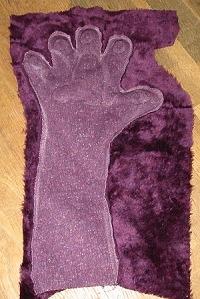
Lay your palm with completed paw pads onto a flat piece of your chosen fur material. Cut the general shape (just a square around the whole piece). See image above. Sew your palm to the back piece flat, like a pancake.
This sew-then-cut technique is more suited to shortpile furs. If your fur is longer than an inch, pre-shave any long fur before sewing. If you wish to use exclusively longpile fur, you will have to cut out a matching back-of-hand piece and tuck and pin your fur.
Trim loosely around your paws, just enough so you can turn them right sides out. Pull the fur out of the seams with your slicker brush, and check to make sure the fingers are shaped how you want them. Turn them back inside out, fix any problems, then trim the edges down to a narrow ¼” seam allowance.
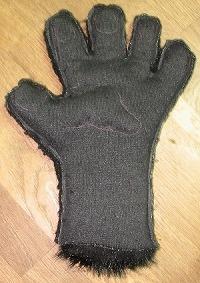
Final step: Turn your paws right sides out, and viola! Enjoy your completed paws!
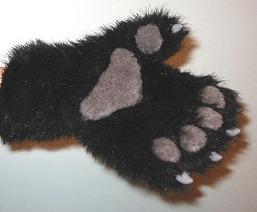
- Tip! To make sure your fingers will physically fit once the paw is sewn and 3-dimensional, a good rule of thumb is to make the space for a single finger as wide as 2-fingers. You can always sew it narrower if it is too wide!
- Make sure there is ½ inch margin between the paw pads and the edge remaining around the fingertips, you need this for your seam allowance for sewing the back of the handpaws to the palms.
- Tip! A wire brush such as a pet slicker brush works great to get fur out of tight seams like on Handpaws!
Read more : How To Install Glove Box Light
For a final touch, you can sculpt claws out of polymer clay (link to video tutorial), score the back (so the adhesive sticks better) and bake according to the instructions on your chosen clay’s packaging. Let cool, then use a washable permanent adhesive (like E6000, found in craft and hobby stores) to glue the claws in place. Hot glue is NOT recommended because your claws will eventually pop off with use if hot glue is used!
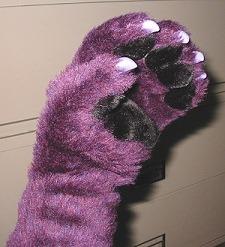
Handpaw Pattern
If tracing your hand isn’t for you and you like the reliability and repeatability of an existing pattern? Here is a printable pattern for the handpaws I do! Your seam allowance may be narrower than the one I illustrated, but it is just a guideline for how much space to allow around your fingers when stitching.
Click to go to the fullsize 8.5 x 11 inch printable version (print landscape). The assembly instructions of this pattern coincide with this tutorial. A sew-then-cut technique can be used.
Please note: You may need to scale UP the pattern if you have larger hands! Some printers add a margin and scale the image so it is smaller than intended, be sure to measure the interior length of the fingers to compare with your own, and scale the pattern up to accommodate! If you do not have access to a sewing machine, you certainly can adapt the pattern VERY easily to handsewing. Use a Blanket Stitch (link to a YouTube video, not my video). To handsew this pattern, you will need to cut out all the pieces so they line up, pin them together, and sew.
Happy crafting! Enjoy your new handpaws!!
Source: https://t-tees.com
Category: HOW
